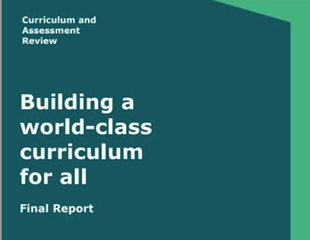Recently I came across two interesting approaches to the shared reading of novels in whole class settings. The first argued that a shared reading only became worthy of the name once discussion about the book took place; prior to discussion a shared read isn’t anything more than a mass solo-read. The second approach ignored talk. Instead, it focused on physical parameters for a shared read. All students were to place their books flat on their desks, they were to place a ruler under the line being read and follow accordingly. They were to remain silent.
The first approach was in a chapter by Lorna Smith and Lucy Kelly in A Practical Guide to Teaching English in Secondary School, edited by Annabel Watson and Ruth Newman. It’s a book packed with advice that draws on the rich heritage of ways to teach English that have developed over time. The second approach was widely shared online as an example of school managerial zeal and top-down interference gone mad. While it was ridiculed on social media, I don’t think this was because it was particularly out of step with practices in certain types of high-profile schools at the moment; rather people recognised it as symptomatic of lots that has been going on in recent years. It’s straight out of the modern-day playbook of pedagogical approaches that privilege control and compliance over deep learning.
You won’t be surprised to hear that EMC’s preferred option is the first. Talk, as demonstrated in our It’s Good to Talk project, enhances the learning that takes place when studying a novel (and all other aspects of the English curriculum). It reinforces understanding, helps generate new ideas, aids memory and builds engagement. It’s pretty obvious stuff, so we need to ask how it is that over the past decade or so a significant number of schools – often ones with a great deal of influence at policy level – have rejected the obvious and opted instead for practices that, pedagogically, just don’t make sense.
First, let’s not condemn too much. The headteacher who set such tight parameters was motivated to have students read as a collective in tutor time by research that highlights its benefits. He quoted research by a team based at University of Sussex that identified a potential benefit for students reading relatively quickly through novels in classroom settings. The research is headed ‘just reading’ so it’s easy to see how misunderstandings could occur. Because the research does not advocate ‘just’ reading. The reading approach it promotes is certainly relatively speedy, without unnecessary and lengthy pauses and digressions, but it is still carefully directed by the teacher and punctuated by moments of discussion – be that whole class or in groups – as well as writing. Literally ‘just’ reading may well have some learning benefits. We know, after all, that students who read widely for pleasure in their own time are academically more successful than those that don’t. But learning can be so much more effective when the social nature of schools is exploited. As Smith and Kelly write, ‘While the portable magic of books can be experienced independently, the real magic might happen when you communicate this externally to others.’ With talk, students come to understand more, see how other readers come to conclusions about what’s happening, what the subtexts and implications are, and recognise how to generate those understandings in future texts that they read. Given that comprehension is key to successful reading at secondary level, it’s obvious why developing this through talking about texts is vitally important.
So let’s throw away the rulers, hold books in a natural position that’s comfortable for reading, and let plenty of actual life into whole class reading!
References
Smith, L. and Kelly, L. 2023. 'Sharing a Class Reader', in Watson, A. and Newman. R. A Practical Guide to Teaching English in Secondary School. London & New York: Routledge. pp. 23-32.
Westbrook, J., Sutherland, J., Oakhill, J. and Sullivan, S., 2019. ‘Just reading’: the impact of a faster pace of reading narratives on the comprehension of poorer adolescent readers in English classrooms. Literacy, 53(2), pp.60-68.




